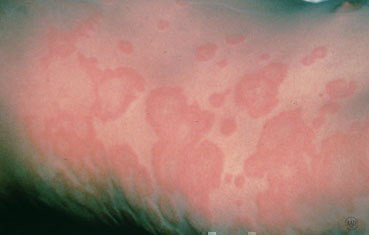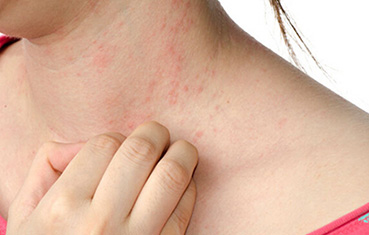Bumps, itching, redness and other skin conditions are very common, and their cause may not be easily identifiable. Rashes can be caused by many things, including plants (poison ivy, for example), allergic reactions to a medication or a food, or an illness (measles or chickenpox, for example). Eczema and hives, both of which are related to allergies, are two of the most common skin rashes.
Atopic dermatitis is the most common form of eczema, affecting between 10 and 20 percent of children and 1 to 3 percent of adults. A common symptom of atopic dermatitis is dry, red, irritated and itchy skin. Sometimes, especially when infected, the skin may have small, fluid-filled bumps that ooze a clear or yellowish liquid. People with atopic dermatitis often have a family history of allergies.
Hives (urticaria) are red bumps or welts that appear on the body. The condition is called acute urticaria if it lasts for no more than six weeks, and chronic urticaria if it persists beyond six weeks. Acute urticaria is most commonly caused by exposure to an allergen or by an infection. The cause of chronic urticaria is largely unknown.


Contact dermatitis is a reaction that appears when the skin comes in contact with an irritant or an allergen. Symptoms can include a rash, blisters, itching and burning.
Soaps, laundry detergents, fabric softeners, shampoos — or even excessive exposure to water — can all cause contact dermatitis. Other items that can cause a reaction are metals (such as nickel, a component of stainless steel and other alloys used to make costume jewelry), adhesives, nail polish, topical medications, plants and latex gloves.
Sometimes an allergen won’t cause a skin reaction unless the skin is also exposed to sunlight. This condition is called photoallergic contact dermatitis. It can occur with products such as shaving lotion, sunscreen and some perfumes.
Content was based on American College of Allergy, Asthma & Immunology